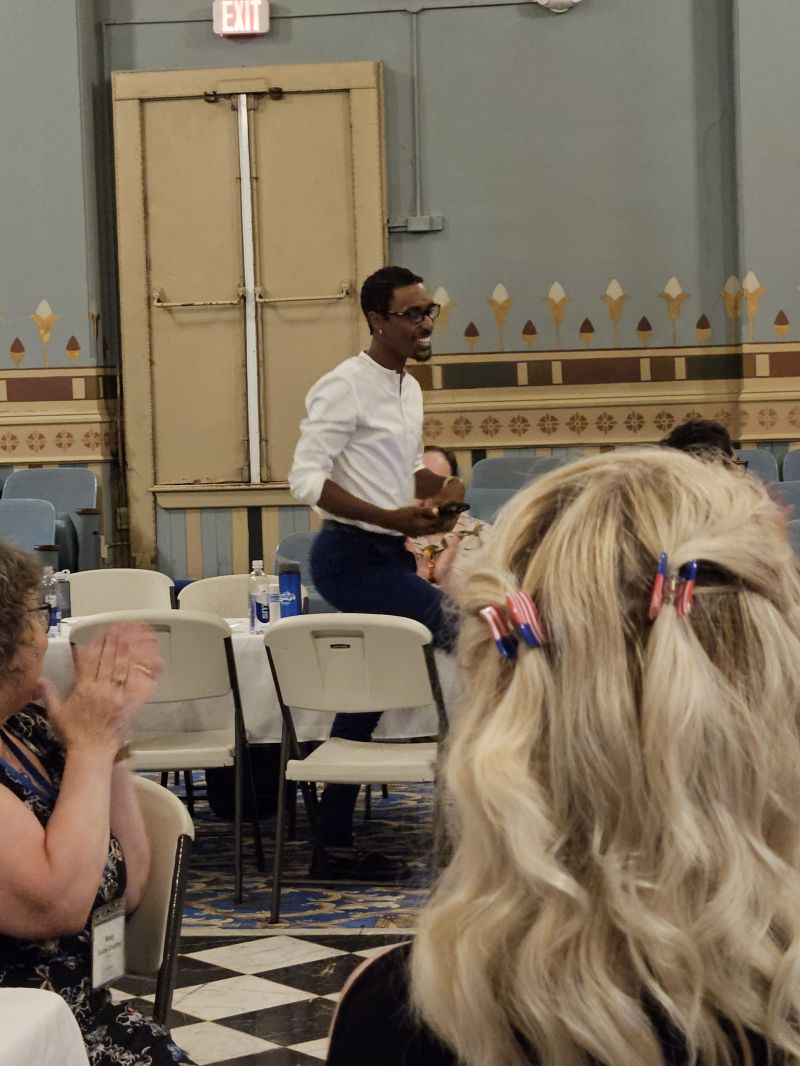The Importance of Preserving Black Burial Sites: A Reflection on Cory J. France’s Contributions
Honoring Heritage Through Restoration
Cory J. France, a cultural historian, recently garnered the esteemed Rory Turner Prize for Cultural Sustainability at Goucher College. This recognition not only honors France’s academic achievements but also underscores his dedication to preserving Black burial grounds, a critical aspect of cultural history that often faces neglect. France’s recent project, “Scenes at the Stakes,” sheds light on the ongoing efforts to restore historic Black gravesites, particularly in South Carolina, highlighting how these efforts contribute to community identity and remembrance.
A Focus on Black Cemetery Citizenship
During a lecture titled “Black Cemetery Citizenship: Memory, Place, and the Stakes of Care,” France discussed community-driven restoration efforts at Palmetto Cemetery in Columbia, South Carolina. Established in 1920, Palmetto Cemetery serves as a final resting place for many significant Black individuals, but upkeep largely depends on the commitment of community members rather than external funding. As France articulated, “This was a labor of love and community…just members of the community coming together.”
The Role of Community in Preservation
The preservation of Black cemeteries often falls on the shoulders of descendants who feel a deep sense of responsibility to honor their ancestors. France emphasized the notion of Black cemetery citizenship, which revolves around remembering, reclaiming, and respecting these sacred spaces. His research is framed within the context of ongoing nationwide efforts to restore historical sites that have been overlooked or forgotten due to systemic neglect. He passionately proclaimed the vital need to “reassert Black presence and responsibility in places shaped by erasure.”
The Palmetto Cemetery Project
France’s capstone project reflects how community support and personal dedication can drive the restoration of local heritage sites. The Palmetto Cemetery Association, formed in 1940, has faced various challenges over the decades in maintaining the 17-acre grounds, which house over 400 graves. In the wake of dwindling resources and community interest, the association began raising funds in 2015 to restore the site’s dignity. France’s involvement has been pivotal, as he leverages his expertise in cultural sustainability to mobilize community action and support.
Similar Efforts Across the Nation
Palmetto Cemetery is just one example of a historic Black burial site in need of attention and preservation. For instance, Baltimore’s Mount Auburn Cemetery, the city’s oldest Black burial ground, has also faced significant challenges. The resting place of notable figures like civil rights leader Lilli Mae Jackson Carroll, it has suffered from neglect in recent years. Local efforts to restore Mount Auburn are reminiscent of those at Palmetto, with descendants highlighting the importance of tending to these sacred spaces.
The Evolving Understanding of Historical Significance
The challenges faced by cemeteries like Palmetto and Mount Auburn serve to illustrate a broader cultural movement towards historical preservation within Black communities across the U.S. It showcases a growing awareness of the significance of these sites, not just as final resting places, but as embodiments of cultural memory and identity. Through organized community efforts, descendants strive to ensure that these sites remain honored and respected, highlighting the cultural narratives intertwined with them.
Continued Advocacy and Future Directions
The fight for Black burial spaces is ongoing, with movements emerging to protect sites like the former Laurel Cemetery in East Baltimore. The collaboration of descendants in unveiling commemorative signs and organizing to reclaim the history of these sites reflects a robust community effort to honor their ancestors and acknowledge historical erasure.
France’s work serves as an inspiring model of how cultural sustainability intersects with community activism, illustrating that the past can inform present actions. His commitment to Black cemetery citizenship exemplifies how collective action can rejuvenate community ties while advocating for the respect and recognition of Black heritage. Through his invaluable contributions, France shines a light on the importance of these sacred spaces in understanding and preserving cultural identity.



